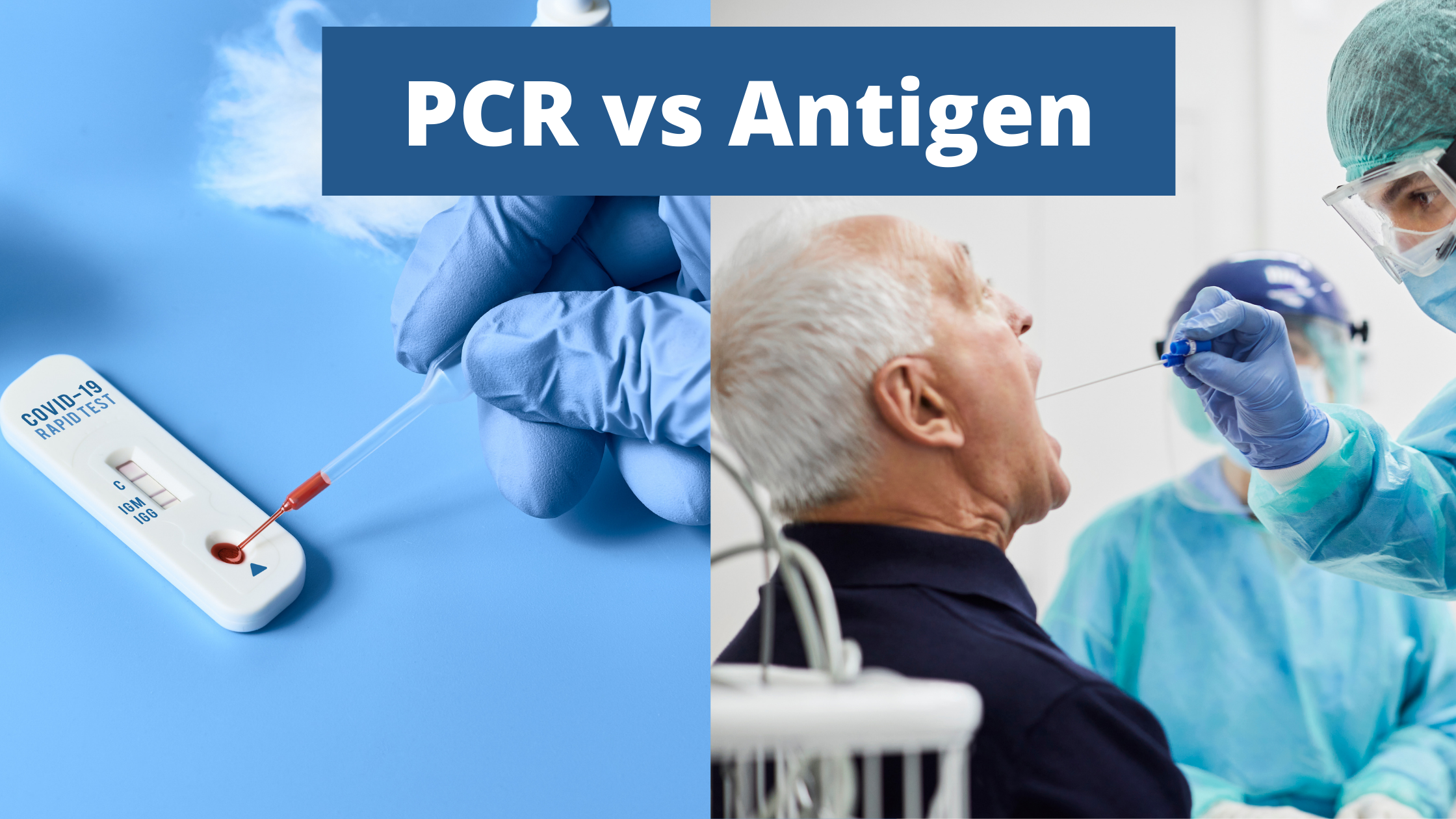Nearly 400 million cases had been documented as of July 20, 2022. A COVID-19 test is likely to have been administered to you or someone you know by now. But, are you aware of the different types of tests you were given and the benefits and drawbacks of each?
SARS-CoV-2 infection is diagnosed primarily through molecular testing, more commonly referred to as PCR and antigen tests. Different parts of the virus are detected by each, which affects both the speed and accuracy of either the test.
What is a PCR Test?
Before we compare the differences between PCR and Antigen tests, we need to define what a PCR test is. An upper respiratory specimen will be subjected to the polymerase chain reaction (PCR) to detect SARS-CoV-2, the virus that causes COVID-19, genetic material (ribonucleic acid or RNA).
It's possible to see the SARS-CoV-2 virus in samples by using the PCR technique, which amplifies small amounts of RNA from samples into deoxyribonucleic acid (DNA). PCR testing has been the gold standard for diagnosing COVID-19 since it was authorized in February 2020 for usage. Using it is safe and accurate.
How does the PCR Test work?
The virus's genetic material can be detected using a PCR test. Even the tiniest sample can yield millions to billions of copies of viral-related DNA, thanks to the employment of sophisticated chemicals and equipment. Due to its high sensitivity, the test has a low rate of false negatives.
How is the sample collected?
Swabs are commonly used to do this procedure. Nasal collection can be accomplished in three ways:
- Nasopharyngeal: When you visit a doctor, they will use swabs to obtain mucus from the top of your nose.
- Mid-turbinate: It is possible to learn how to do this independently or have a professional do it for you, but the procedure requires inserting a soft swab less than an inch into the nose to collect a sample.
- Anterior nasal swab: Self-administered or done by a skilled health care provider, this test entails inserting the swab three-quarters of an inch inside the nostrils and spinning it around at least four times to collect a sample of mucus from the nasal passageway.
Some other techniques of collecting data include:
- A swab from the oropharyngeal (throat): A swab is used to obtain a sample from the back of the throat by a professional health care worker.
- Saliva: Spit is collected in a container with a tight-fitting, leak-proof lid. It's currently only available on a few sites.
How does the test get processed?
The vast majority of specimens are forwarded to labs.
How quickly will you receive PCR test results?
Most PCR test sites do not have lab equipment on site. Therefore, lab capacity and shipping logistics is a factor in the turnaround time of the tests. Depending on where you where you get tested, expect to wait 12-72 hours for results.
What is an Antigen test?
COVID-19 antigen testing detects coronavirus proteins. The biggest advantage of antigen testing over other methods is that it is easy and rapid enough to serve as a "first line of defense" for those with symptoms of COVID.
How does the test work?
Antigen testing looks for SARS-CoV-2 viral proteins in the nasal swab sample. A reagent is used to treat your sample, and it is then tested on-site by a medical specialist. Unlike molecular tests, these require a larger quantity of viruses in the test sample before the test results are positive. As a result, an antigen test may occasionally return a false negative result for a patient.
How is the antigen test sample collected?
Similar to a PCR test, a nasal swab is the most common method of collecting an antigen test sample
How the test does get processed?
A test strip or cartridge is used to process the nasal swab sample. The swab is mixed with an reagent solution that reacts with the CoV-2 viral proteins. Results are displayed as a colored line to indicate positive or negative, much like a home pregnancy test.
How quickly will you receive antigen test results?
Results are processed on the collection cartridge 15 minutes after apply the reagent solution. At this point, a line on the cartridge will appear if your test is positive indicating positivity. Antigen tests have a very low false positivity rate, meaning a positive test result can be confidently trusted.
Which COVID-19 Test Is More Accurate? Whats the Difference between PCR and Antigen Tests
The RT-PCR COVID-19 testing is the most precise testing solution to detect SARS-CoV-2 infection, with an extremely low false negativity rate.
Antigen tests, on the other hand, have a very high rate of false negatives because they are less sensitive than PCR tests. Antigen tests require a sufficient viral load in a patients sample to identify the COVID protein. On the other hand, Antigen tests also have a very low false positive rate (meaning, a positive test result can be confidently trusted as indicating an active COVID infection). A negative result from an antigen test can not conclusively say whether you have COVID, though.
Which test do you recommend? PCR or Antigen?
Each test has its own advantages and disadvantages. As a general rule, PCR tests are the gold standard for their incredible precision in detecting COVID infection. The major downside is cost, convenience, and time. Because the PCR test requires a lot of laboratory equipment, the processing is expensive and requires logistics time of transporting your sample to a laboratory and processing the sample.
Antigen tests have the incredible advantage of being cheap, fast, and convenient. They can be acquired inexpensively, kept at home, and self-administered and processed in under 20 minutes.
Next Steps:
Need to find a PCR test or antigen test? Thats why we built TestNearMe.org! Here are some quick links to help:
